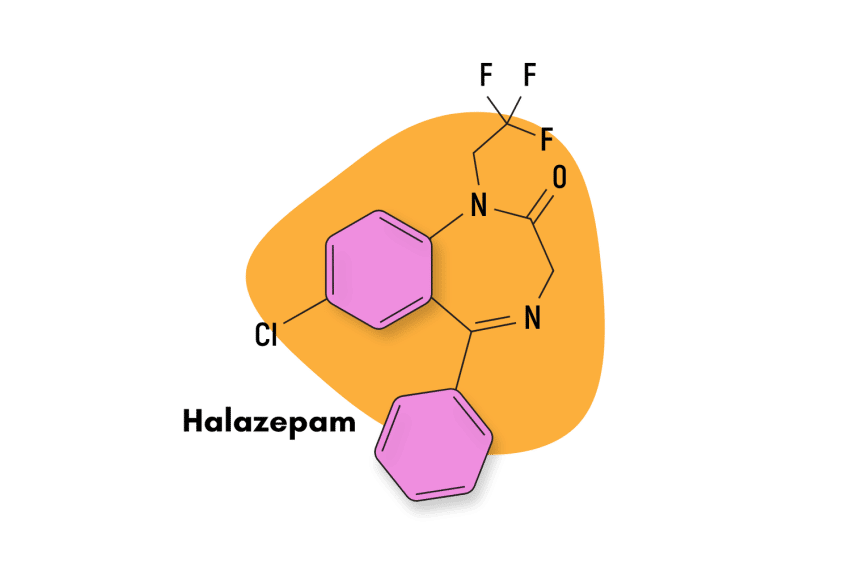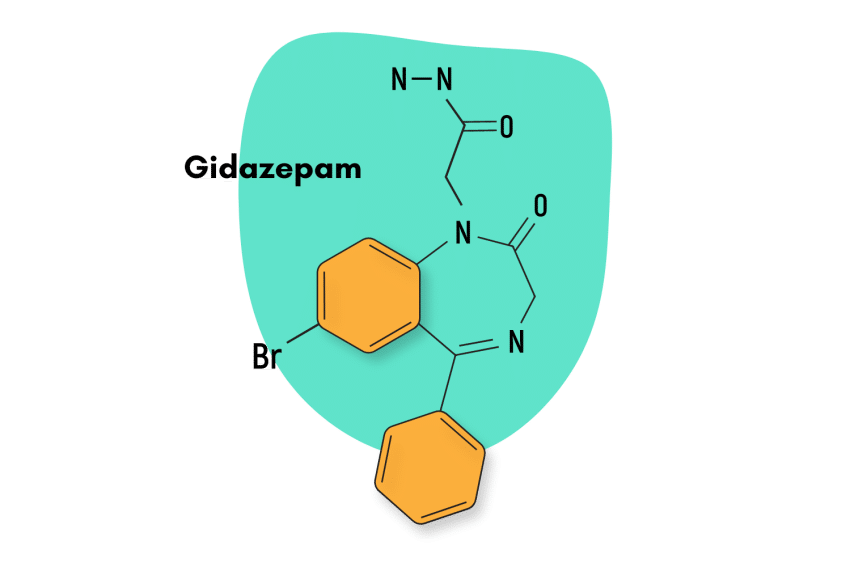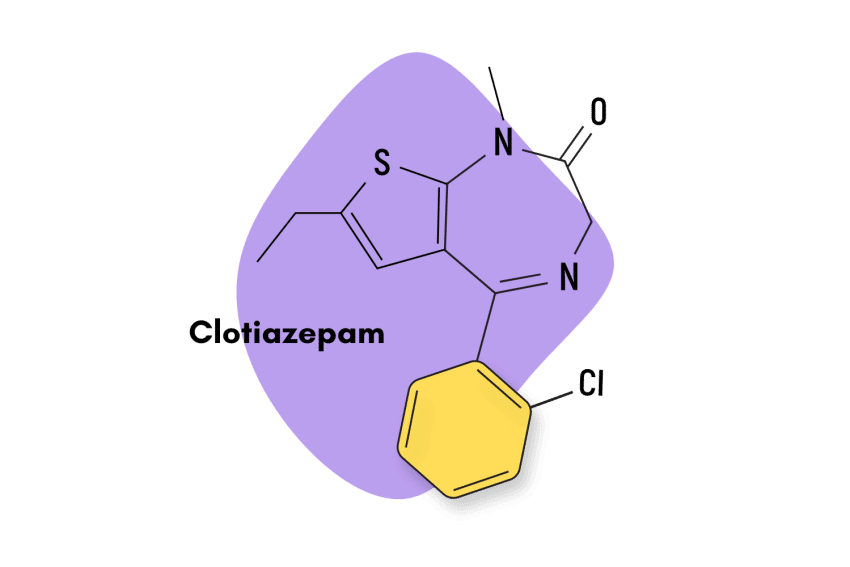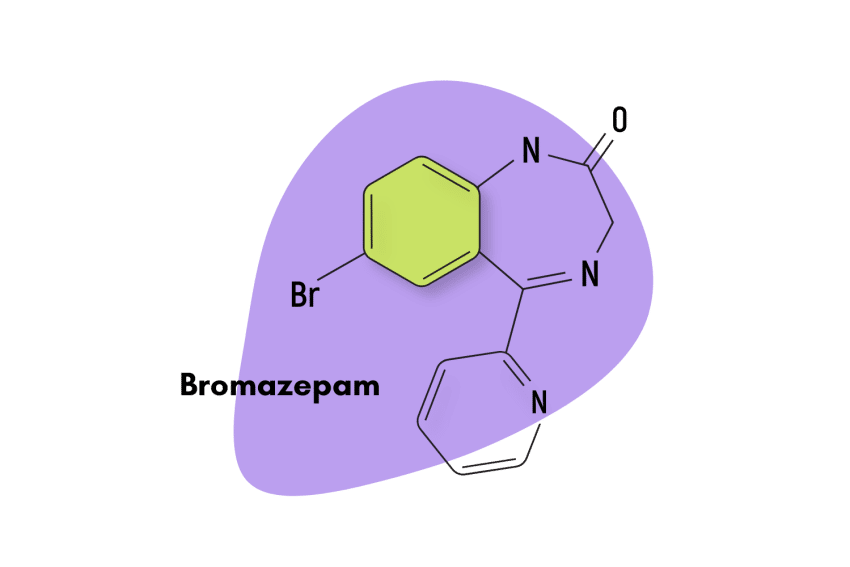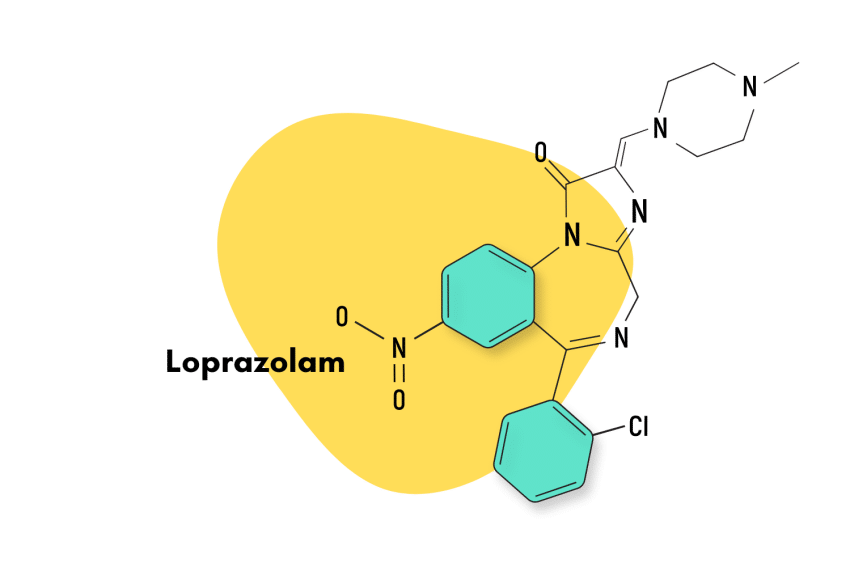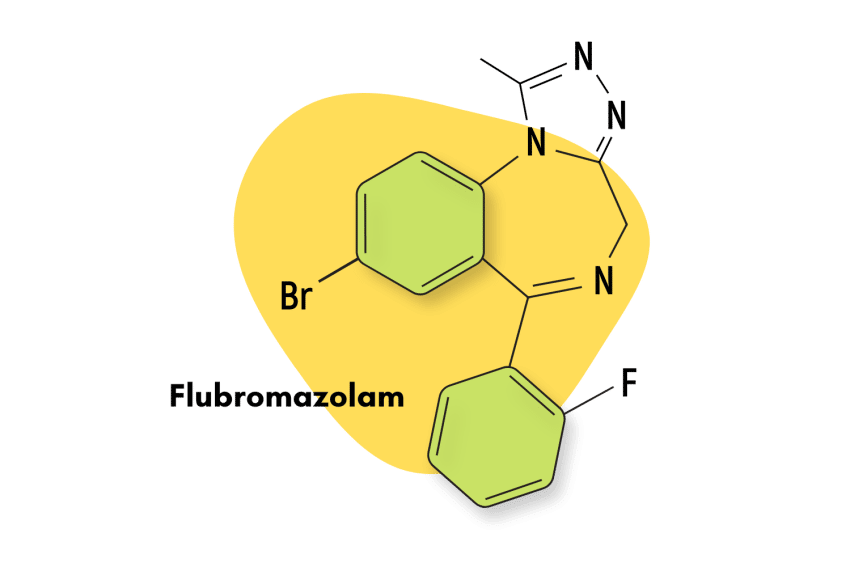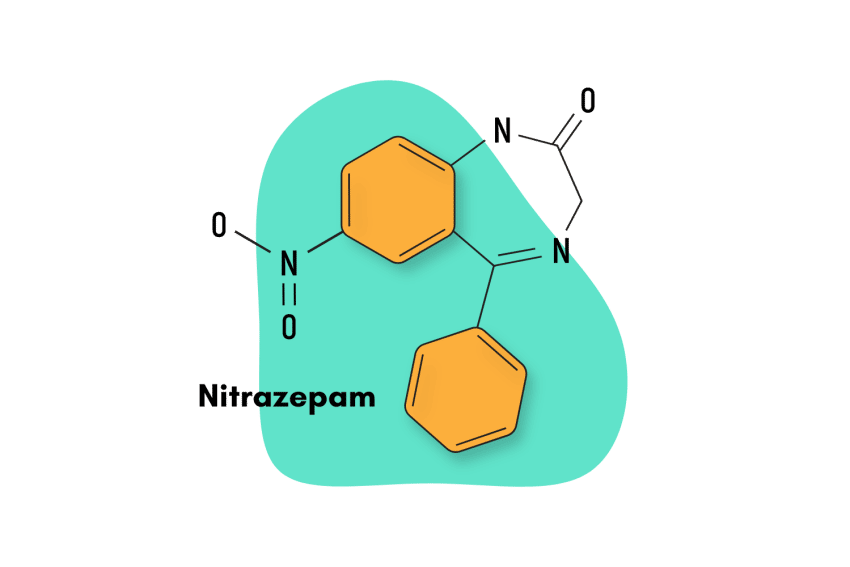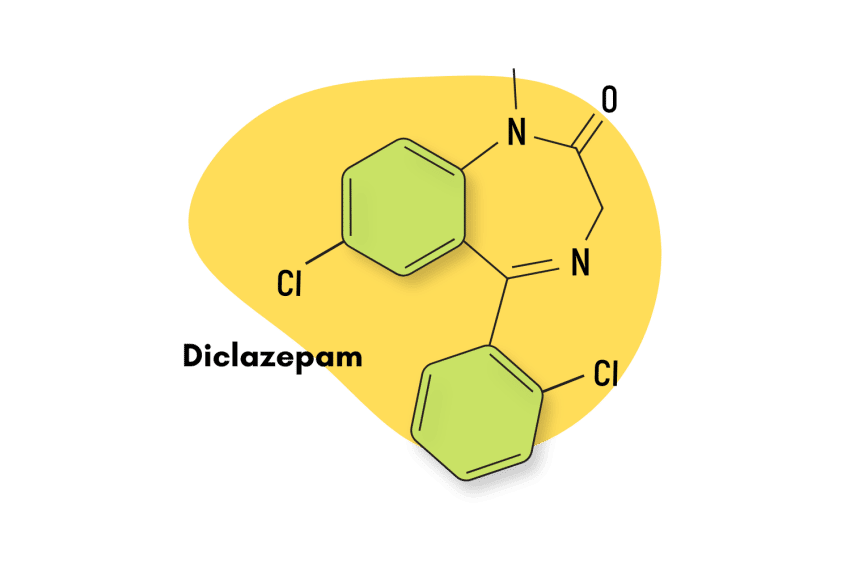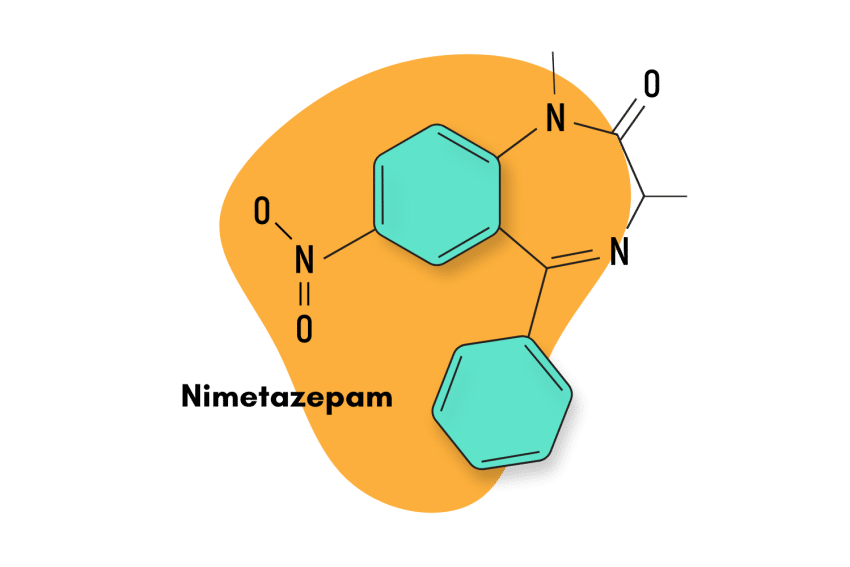Haloxazolam Fact Sheet: Dosage, Safety, & Harm-Reduction Tips
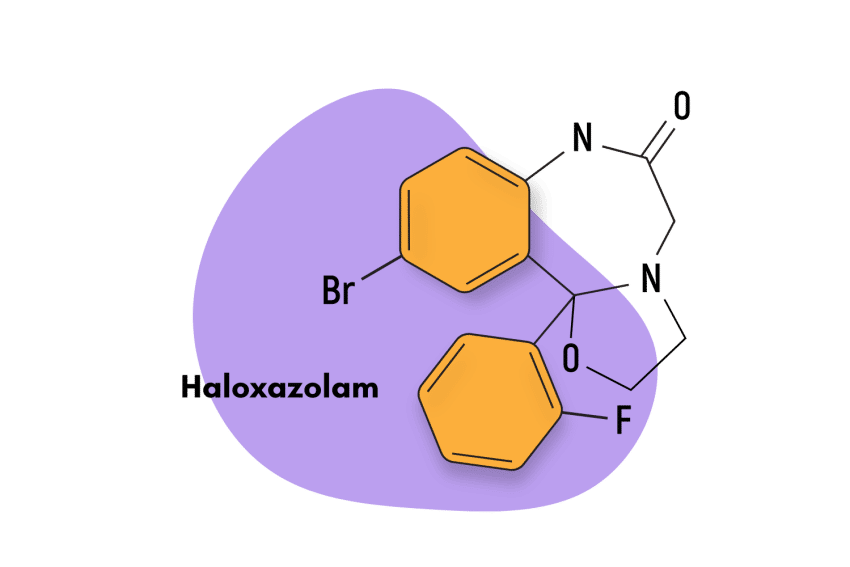
Haloxazolam, available commercially as Somelin, is a benzodiazepine medication sold in Japan to treat insomnia and other sleeping disorders.
Research suggests that haloxazolam has pharmacological qualities similar to benzodiazepine hypnotics like triazolam, temazepam, and flunitrazepam.
Here, we’ll explore the dosage equivalents to haloxazolam, provide safety information, and offer some important tips on staying safe while using haloxazolam. We’ll also cover some of the best alternatives to consider using instead.
Haloxazolam Specs
| Status | Approved Medication in Japan |
| Common Dosage | 10 mg |
| PubChem ID | 3563 |
| CAS# | 59128-97-1 |
IUPAC Name:
10-bromo-11b-(2-fluorophenyl)-2,3,5,7-tetrahydro-[1,3]oxazolo[3,2-d][1,4]benzodiazepin-6-one
Other Names: Somelin
Metabolism
Haloxazolam is metabolized in the liver, where it’s transformed through hydrolysis [1]. The primary enzyme found responsible for metabolizing haloxazolam is the CYP3A4 subgroup.
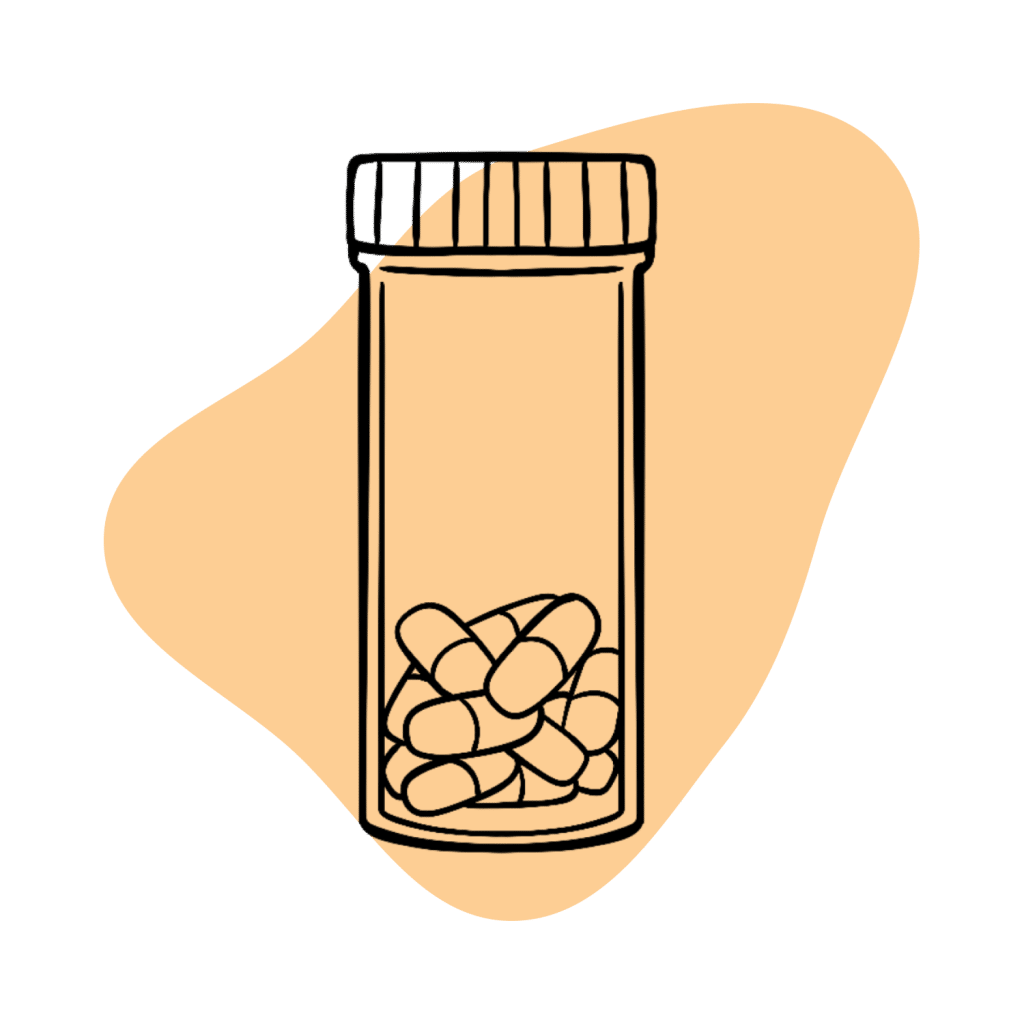
How Strong is Haloxazolam?
Haloxazolam is usually administered orally at bedtime in 5 or 10-mg doses. The potency is roughly equivalent to drugs like chlordiazepoxide (Librium) and clobazam (Onfi) but with a much stronger sedative action.
Haloxazolam Dosage Equivalency
**Caution:** Benzodiazepines have a narrow therapeutic window. Dose equivalents may not be accurate in higher doses.
This calculator does not substitute for clinical experience and is meant to serve only as a reference for determining oral benzodiazepine equivalence.
Please consult a medical practitioner before taking benzodiazepines.
How Does Haloxazolam Work?
Like most other benzodiazepines, haloxazolam exerts its effects through the GABA-A receptors. Haloxazolam binds to the GABA receptors to potentiate the effects of our naturally-occurring GABA. This causes a widespread suppression of electrical activity in the brain — leading to the characteristic effects of reducing anxiety and worry, slowing down thought processes, forcing the muscles to relax, and causing users to become sleepy.
While the general mechanism of action for all benzodiazepines is well understood (GABA modulation), there are subtle differences between each compound.
In the case of haloxazolam, the effects are heavily-weighted towards the sedative side of the equation. This drug almost always causes users to fall asleep, even in lower doses.
The exact reason haloxazolam does this, yet other benzodiazepines do not, is unclear.
Haloxazolam is unique as a muscle relaxant in that it only affects gamma motor neurons and not alpha motor neurons [2]. The alpha motor neurons are responsible for controlling muscle contraction, while the gamma neurons are associated with stretch and flex limits. For reference, most benzodiazepines affect both types of motor neurons.
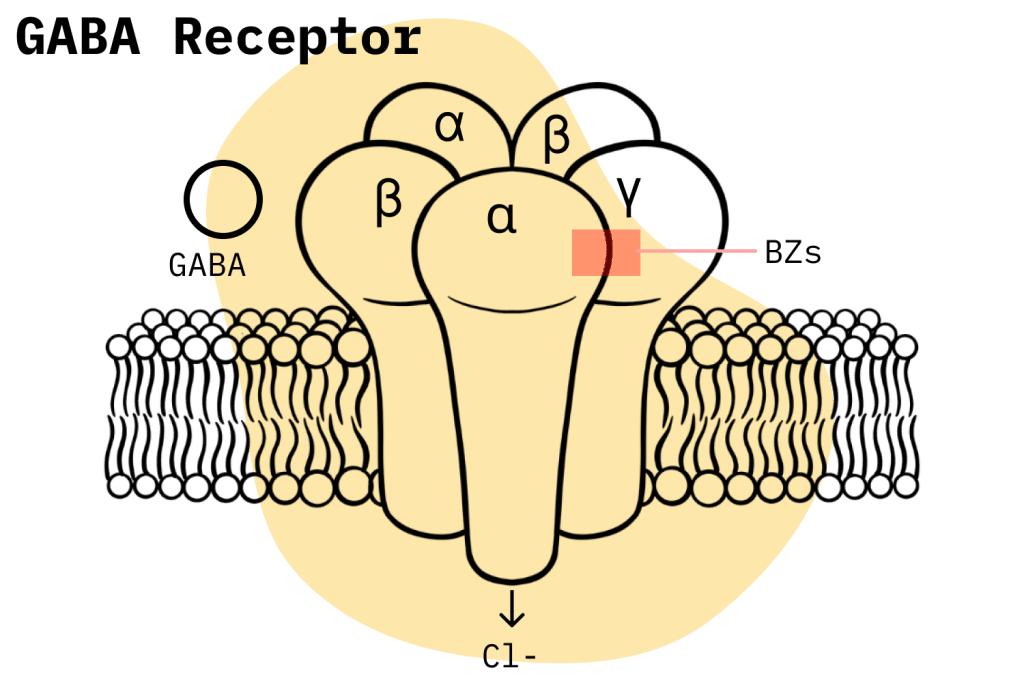
Is Haloxazolam Safe? Risks & Side Effects
Even though it’s not an approved medication outside of Japan, haloxazolam is listed as a Schedule IV compound in the United States — meaning that despite its recognized medical uses, it does carry the potential for abuse and physical dependence.
As a hypnotic medication, if haloxazolam is used properly, there is a moderate risk of the creation of bad habits that could lead to a benzodiazepine addiction. Since patients are asleep for the better part of haloxazolam’s duration of effects, they don’t tend to develop a craving for the psychoactive effects.
However, it is possible to become dependent on the medication to fall asleep after a while. Patients often experience difficulty falling asleep without taking the medication, prompting them to continue using it long after the prescription expires.
The problem with dependence on this group of drugs is that the side effects of withdrawal tend to be even worse than the initial symptoms being treated.
Side Effects of Haloxazolam
There are no “official” side effects for haloxazolam because it isn’t an approved medication. However, we know that this benzo displays a meaningful comparison to other compounds studied. In this sense, we can take a look at the side effects profile of the closest alternative — triazolam (Halcion).
The FDA has identified the following side effects associated with triazolam use:
- Confusional states
- Congestion
- Constipation
- Coordination disorders/ataxia
- Cramps/pain
- Depression
- Dermatitis
- Diarrhea
- Dizziness
- Drowsiness
- Dry mouth
- Dysesthesia
- Euphoria
- Headache
- Insomnia
- Less common side effects may include:
- Light-headedness
- Memory impairment
- Nausea/Vomiting
- Nervousness
- Nightmares
- Paresthesia
- Tachycardia
- Taste alterations
- Tinnitus
- Tiredness
- Visual disturbances
- Weakness
A study that compared the effects of haloxazolam, triazolam, and flunitrazepam on EEG waves found that, in this regard, the compounds were largely similar. When it came to side effects, though, it was discovered that only haloxazolam displayed a residual “hangover” effect on the fourth night of the study [3].
This is significant because residual drowsiness is one of the most consequential adverse effects in the context of benzodiazepine hypnotic treatment.
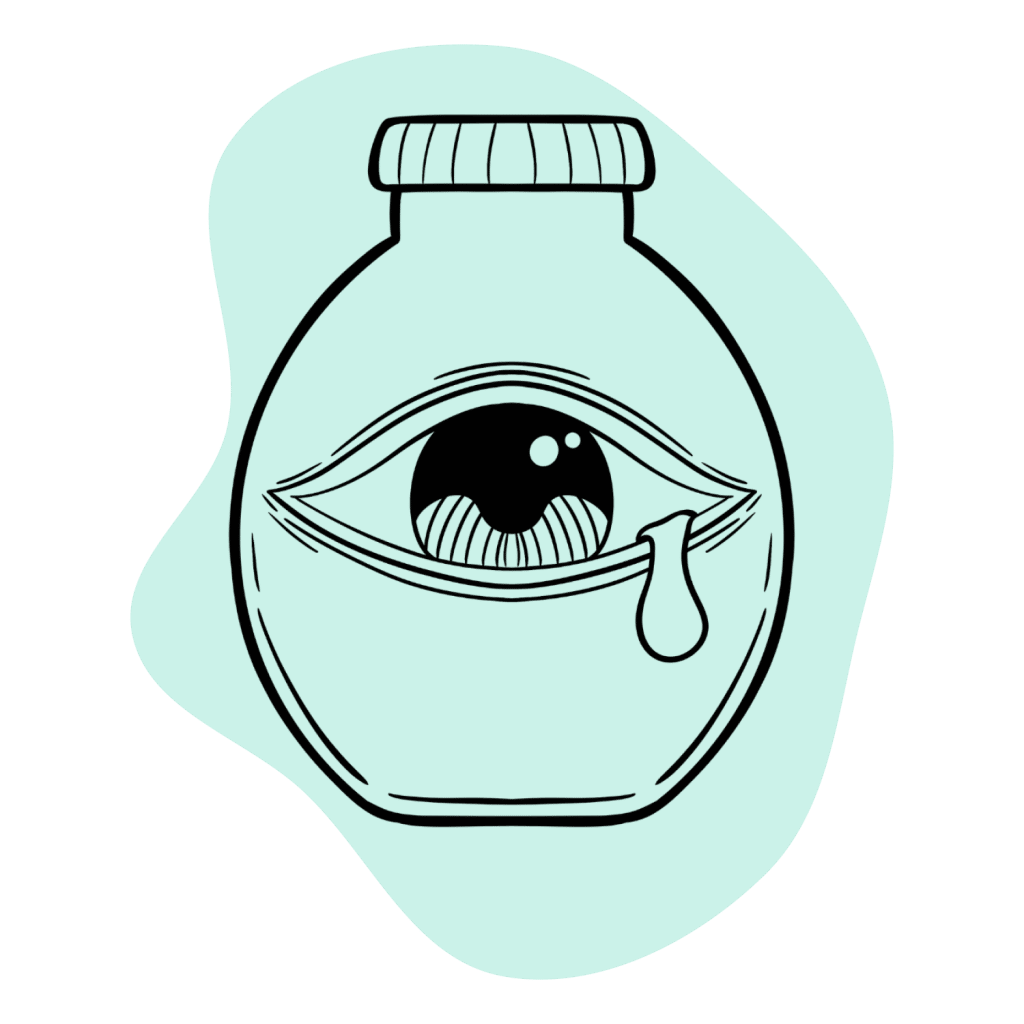
Benzodiazepine Withdrawal & Dependence
Benzodiazepine compounds are quite capable of causing symptoms of physical dependence and withdrawal among users. There’s a meaningful debate about how likely this risk is and what factors affect it, but it is now generally accepted that benzodiazepine treatment causes physical dependence in a significant minority of users.
Before, it was mistakenly believed that dependence could only arise due to misuse. Misuse can make this risk more meaningful, but it is not necessary to develop dependence.
Research now suggests that these are the four factors that most influence the formation of dependence during a benzodiazepine treatment:
- Daily benzodiazepine use for more than four months
- High dose (the higher the dose, the higher the dependence liability)
- Sudden cessation of benzodiazepine use
- Use of a short-acting benzodiazepine over a longer or intermediate-acting one
We can also turn to research to get a rough idea of how common benzodiazepine dependence might be. A relatively recent study that examined users who utilized benzodiazepines for more than four weeks found that approximately one-third of individuals experienced dependence and withdrawal symptoms after concluding their treatment [4].
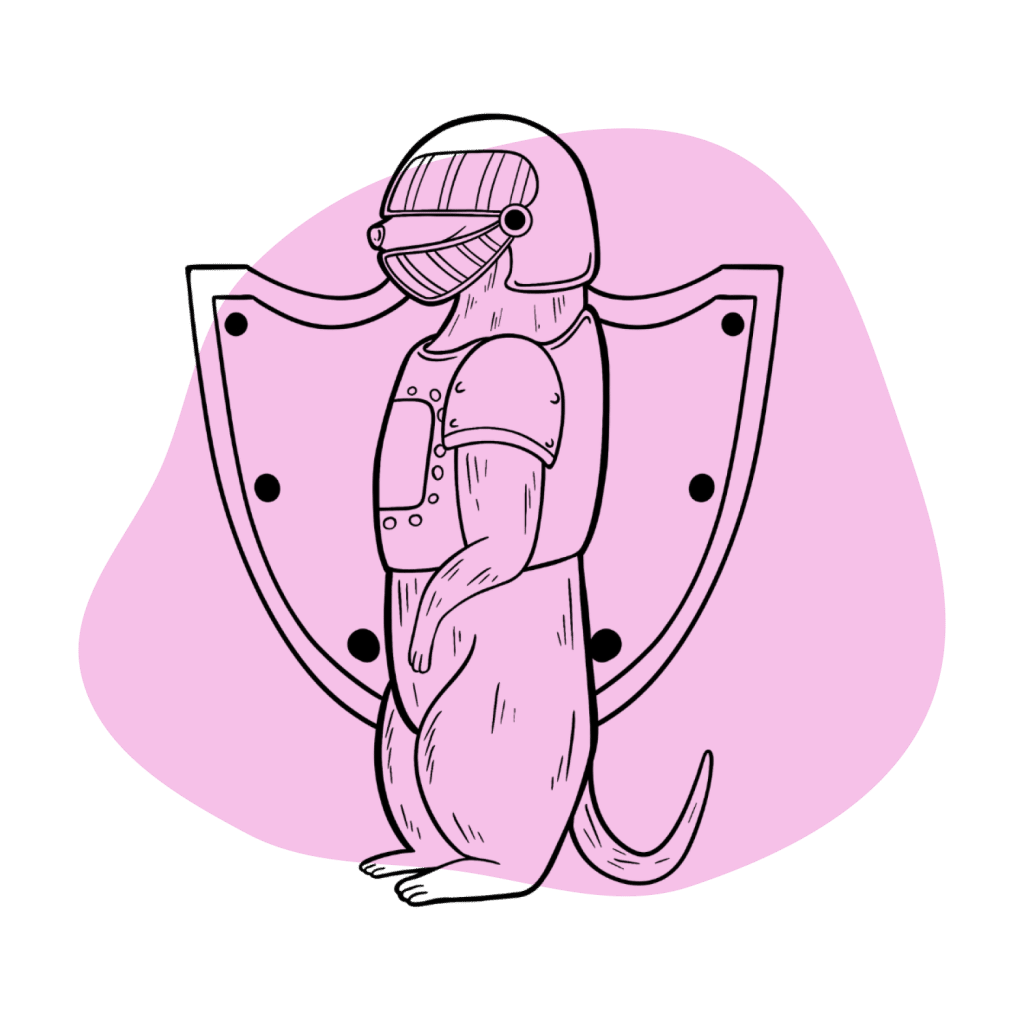
Harm Reduction: Haloxazolam
Here are some tips and tricks for staying safe while using benzodiazepine drugs:
- 🥣 Don’t mix — Mixing benzodiazepines with other depressants (alcohol, GHB, phenibut, barbiturates, opiates) can be fatal.
- ⏳ Take frequent breaks or plan for a short treatment span — Benzodiazepines can form dependence quickly, so it’s important to stop using the drug periodically.
- 🥄 Always stick to the proper dose — The dosage of benzos can vary substantially. Some drugs require 20 or 30 mg; others can be fatal in doses as low as 3 mg.
- 💊 Be aware of contraindications — Benzodiazepines are significantly more dangerous in older people or those with certain medical conditions.
- 🧪 Test your drugs — If ordering benzos from unregistered vendors (online or street vendors), order a benzo test kit to ensure your pills contain what you think they do.
- 💉 Never snort or inject benzos — Not only does this provide no advantage, but it’s also extremely dangerous. Benzos should be taken orally.
- 🌧 Recognize the signs of addiction — Early warning signs are feeling like you’re not “yourself” without the drug or hiding your habits from loved ones.
- ⚖️ Understand the laws where you live — In most parts of the world, benzodiazepines are only considered legal if given a prescription by a medical doctor.
- 📞 Know where to go if you need help — Help is available for benzodiazepine addiction; you just have to ask for it. Look up “addiction hotline” for more information where you live. (USA: 1-800-662-4357; Canada: 1-866-585-0445; UK: 0300-999-1212).
The harm reduction recommendations listed above are easy to use, but better yet, they’re incredibly effective at helping users avoid the most dangerous behaviors associated with benzodiazepine use. When dealing with prescription drugs of any kind, it’s vital that users be equipped with the conceptual tools needed in order to make smart decisions.
Haloxazolam Drug Interactions
As mentioned above, mixing benzodiazepines with other depressants can be fatal. And this is not an exaggeration. The recent explosion in polydrug abuse in the United States has seen a marked rise in the number of drug-related fatalities. In almost all of these instances, the deceased had consumed some combination of compounds that inhibit the central nervous system and died as a result of subsequent respiratory depression.
Although not as deadly, there are other combinations to watch out for.
CYP drug interactions are a common way that users unknowingly expose themselves to risk. Drugs whose metabolism is mediated by this system can have said process disrupted if the user is also taking a CYP inducer or inhibitor drug. Check with your doctor and ensure you’re not engaging in this sort of drug interaction.

Haloxazolam Contraindications
Luckily, all benzodiazepines share a common set of contraindications, so they’re generally easy to remember.
Contraindications for benzodiazepines are:
- Bronchitis
- Chronic obstructive pulmonary disease (COPD)
- Conjunctive use of barbiturates, opiates, or those suffering from alcoholism
- Contraindications for benzodiazepines are:
- Intellectual disabilities due to frequent paradoxical reactions
- Lactation
- Luckily, all benzodiazepines share a common set of contraindications, so they’re generally easy to remember.
- Major depression
- Myasthenia gravis
- Over the age of 65 (high risk)
- Personality disorders
- Pregnancy
- Sleep apnea
- Use of driving or heavy machinery
Similar Benzodiazepine Alternatives
Since haloxazolam is not available in the United States, here are some benzodiazepines with similar characteristics.
Triazolam (Halcion)
Studies have shown that triazolam and haloxazolam have almost identical effects on EEG waves. However, there are some significant differences between the two in terms of pharmacokinetics. With a half-life of only 1.5 to five hours, triazolam is a very short-acting compound, whereas haloxazolam is long-acting.
Generally, short-acting benzodiazepines are better as a sleep aid. This is because long-acting benzodiazepines remain active all night, which can inhibit or reduce time spent in REM sleep, and may result in significant grogginess the following morning.
Triazolam is substantially stronger than haloxazolam, with an average dose of just 0.5 mg or less compared to around 5–20 mg for haloxazolam.
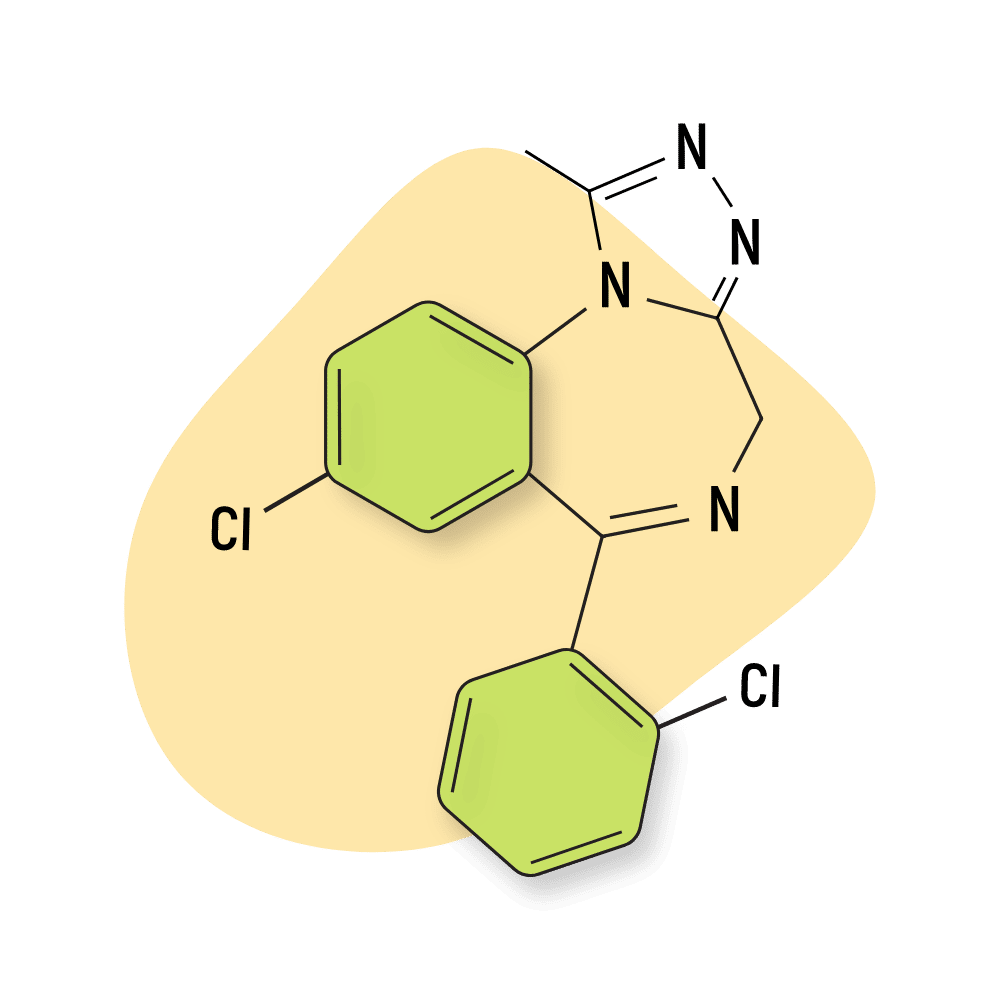
Temazepam (Restoril)
Both temazepam and haloxazolam are effective benzodiazepine hypnotics with only slight differences between them. Temazepam has an estimated duration of effects of six to ten hours, making it an intermediate-acting compound. It’s also of much lower potency when compared to haloxazolam but not as potent as triazolam.
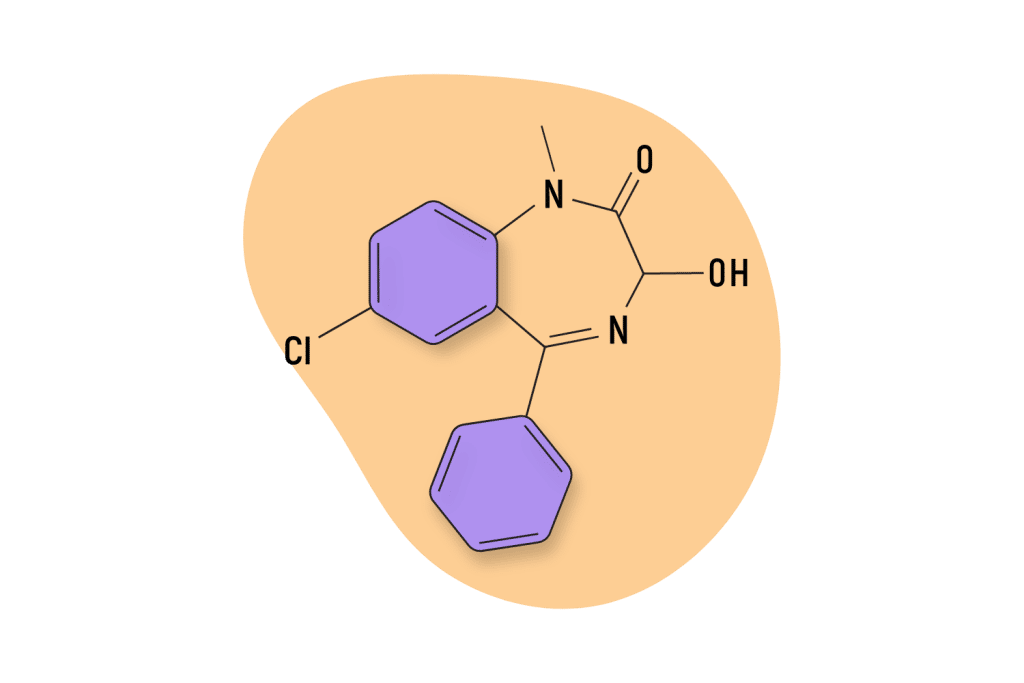
Flunitrazepam (Rohypnol)
Research suggests that flunitrazepam and haloxazolam have similar hypnotic properties. Flunitrazepam is far more potent and likely has stronger amnesic properties than haloxazolam.
In fact, flunitrazepam’s amnesic effects are so powerful that it is one of the few benzodiazepine compounds that’s listed as a Schedule III as opposed to Schedule IV. Flunitrazepam is considered problematic because of its use as a date rape drug.
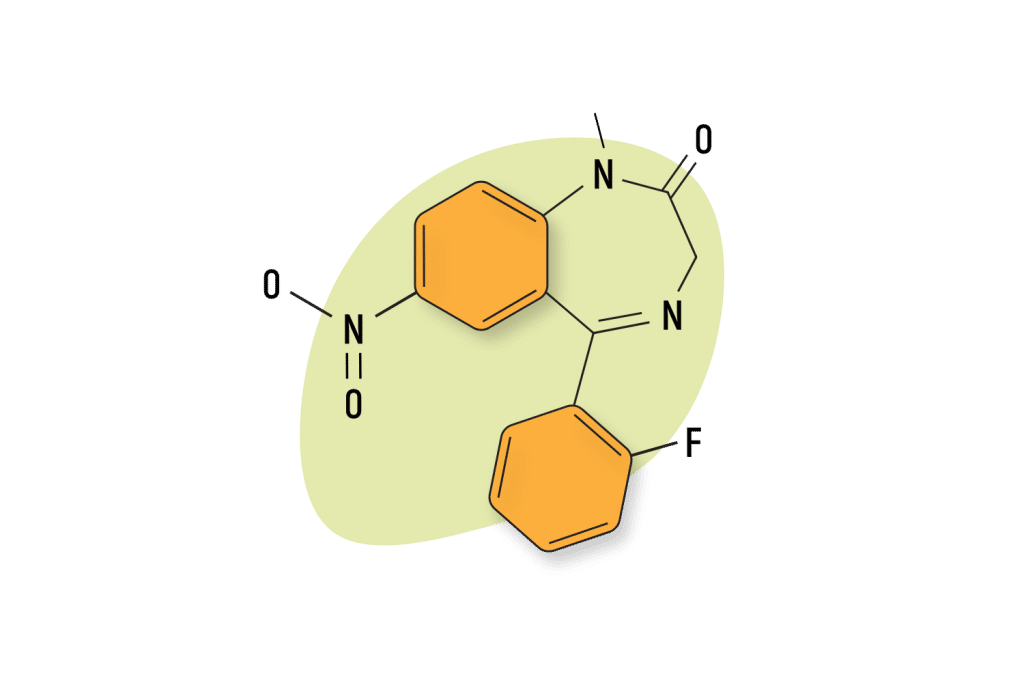
Natural Alternatives to Benzodiazepines
There are plenty of natural alternatives to benzodiazepines that may offer enough support to entirely avoid this class of drugs. Keep in mind that no natural product will offer the same effects as synthetic benzodiazepines. Still, they work for many and carry a far lower risk of severe side effects.
The best natural alternatives to benzos are plants like kava, kratom, or valerian — each of which are species of plants that contain GABAergic active ingredients. These plants work through similar mechanisms as benzodiazepines to modulate anxiety, muscle contraction, stress levels, mood, and sleep.
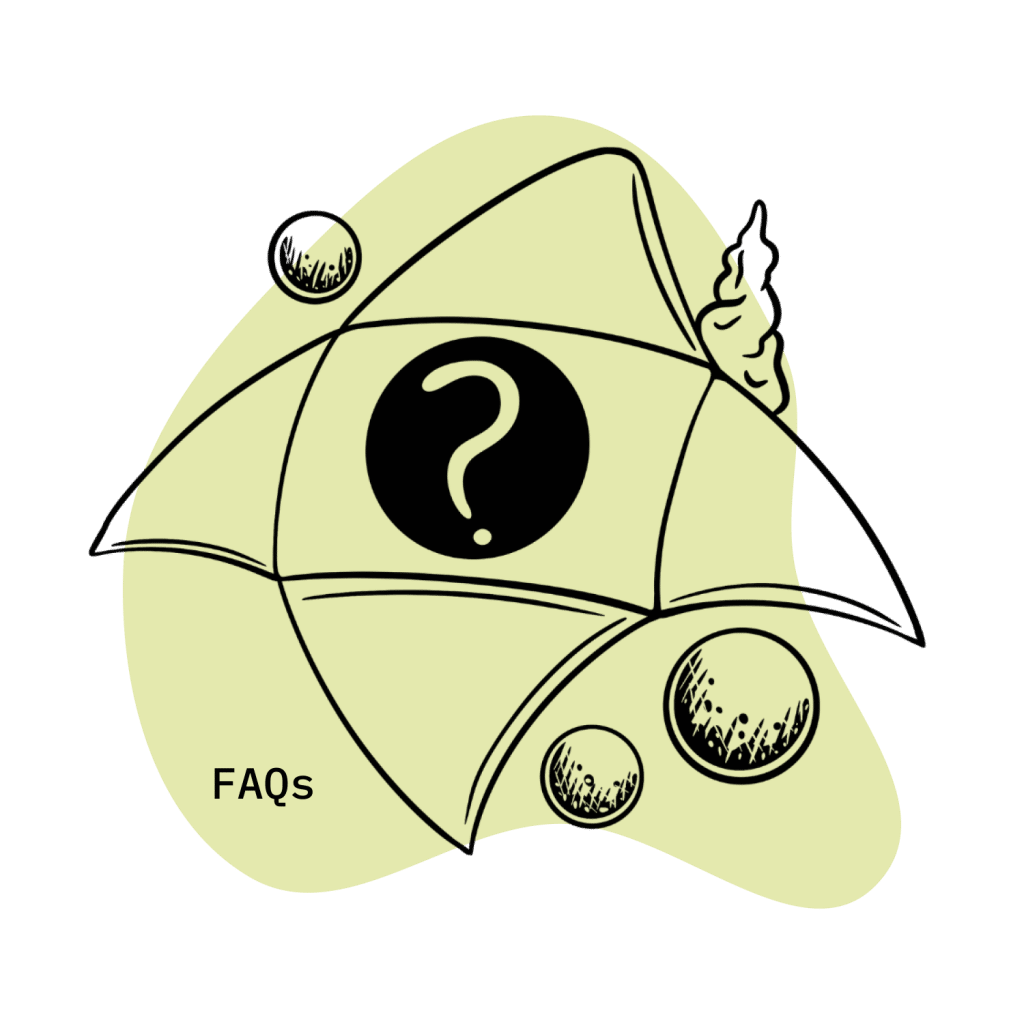
Haloxazolam FAQs
What are the effects of haloxazolam on electroencephalogram (EEG) waves?
A study that inquired into the effects of haloxazolam (10 mg), flunitrazepam (4 g), and triazolam (0.5 mg) on EEG waves concluded the following:
- It was found that all three benzodiazepines provoked similar changes in EEG waves, namely increasing higher frequencies (including the sigma and beta bands) and decreasing lower frequency activity.
- The enhancement of sigma activity peaked during non-rapid eye movement sleep following the first administration and was maintained at high levels on all the nights the benzodiazepines were administered.
- Beta wave activity increased through the night after the administration of haloxazolam and flunitrazepam but not with triazolam. This suggests that blood concentration level depends upon the increase of beta activity.
- Finally, only haloxazolam displayed a residual “hangover” effect on the fourth withdrawal night.
The researchers concluded that chronic administration of these three benzodiazepine derivatives produces similar profiles in sleep EEG spectral changes, with some differences depending on their half-lives and doses [3].
References
- Kuwayama, T., Kurono, Y., Muramatsu, T., Yashiro, T., & Ikeda, K. (1986). The Behavior of 1, 4-Benzodiazepine Drugs in Acidic Media. V.: Kinetics of Hydrolysis of Flutazolam and Haloxazolam in Aqueous Solution. Chemical and pharmaceutical bulletin, 34(1), 320-326.
- Sakai, Y. (1983). Comparative study on the effects of haloxazolam and estazolam, new sleep-inducing drugs, on the α-and γ-motor systems. Japanese journal of pharmacology, 33(5), 1017-1025.
- Tan, X., Uchida, S., Matsuura, M., Nishihara, K., & Kojima, T. (2003). Long‐, intermediate‐and short‐acting benzodiazepine effects on human sleep EEG spectra. Psychiatry and clinical neurosciences, 57(1), 97-104.
- Riss, J., Cloyd, J., Gates, J., & Collins, S. (2008). Benzodiazepines in epilepsy: pharmacology and pharmacokinetics. Acta neurologica scandinavica, 118(2), 69-86.

